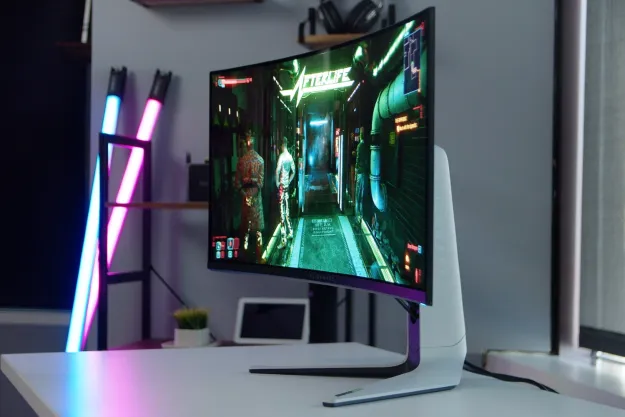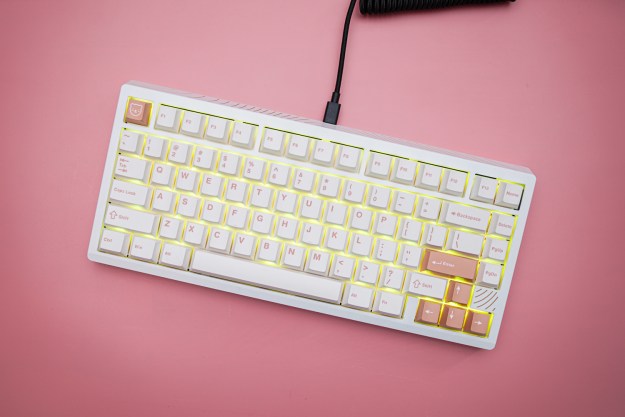This year was huge for monitors. In 2023, we saw the first OLED gaming monitors, refresh rates beyond what we could have ever imagined, and unique form factors that enhance productivity and media consumption by a mile.
There’s always the old guard on our list of the best monitors if you want a good, reliable display. But these monitors pushed the envelope this year in a way no other displays did.
Want to see the rest? Check out our full list of the most innovative tech products of 2023!
Most innovative: Samsung Odyssey OLED G9
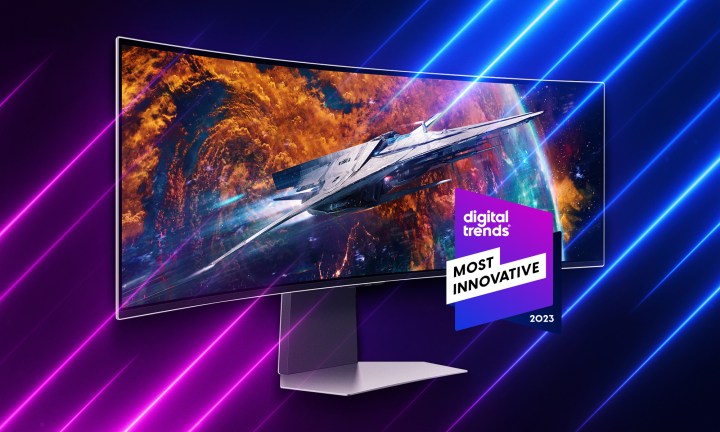
Just because a monitor is big doesn’t mean its innovative, but the Odyssey OLED G9 is truly innovative. It’s an impressive 32:9 display that measures 49 inches diagonally, which is a form factor Samsung has championed over the past couple of years. This year, though, it’s delivered via a QD-OLED panel, and that makes all the difference.
OLED looks amazing, but it’s the practicality of this tech that stands out on the Odyssey OLED G9. Compared to LCD, where you need to allocate some space in the monitor for a backlight, OLED is very thin. That allowed Samsung to massively cut down on the size of the Odyssey OLED G9, delivering a slim metal frame and more subtle curve compared to the previous version. Both
The panel swap is also a huge boost to image quality. The Odyssey Neo G9 looked great for an LCD monitor, but the perfect black levels of OLED are far more immersive for cinematic games. Combined with the 32:9 aspect ratio, the Odyssey OLED G9 pulls you into the game world, providing the most immersive gaming experience we’ve ever seen.
The Odyssey OLED G9 may not be some new, crazy concept on the level of the Samsung Odyssey Ark, but it takes an already great foundation and improves it through a smart panel swap, and that makes it the most innovative monitor we’ve seen this year.
Runner-up: Alienware 500Hz gaming monitor
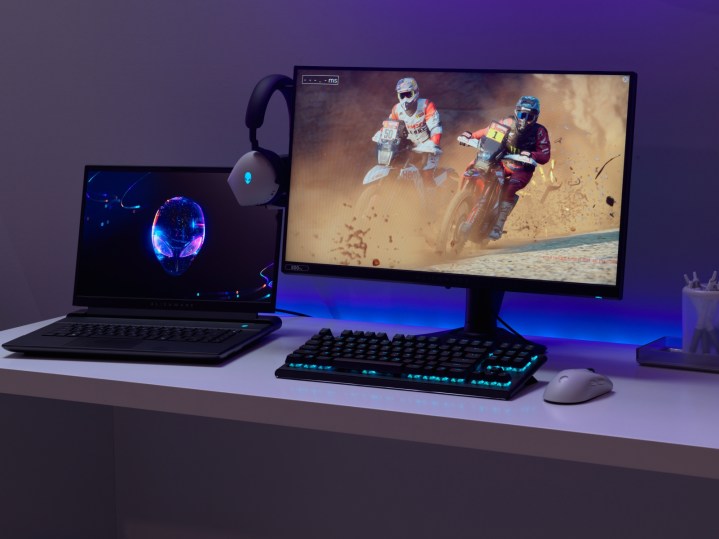
This was the year we saw truly fast gaming
At 500Hz, the screen is refreshed once every 2 milliseconds. There are some games where that can make a big difference, too. If you’re playing titles like Counter-Strike 2, Valorant, or Rainbow Six Siege, you can easily cross a frame rate high enough to take advantage of a 500Hz display. In addition, Alienware built an Nvidia Reflex module into the display, allowing you to analyze your latency from the moment you click.
Alienware isn’t alone here, though. Asus also released a 540Hz display this year, and they’re both great options if you’re into competitive gaming. That’s really the best use for these
Honorable mention: Asus ROG Swift PG27AQDM
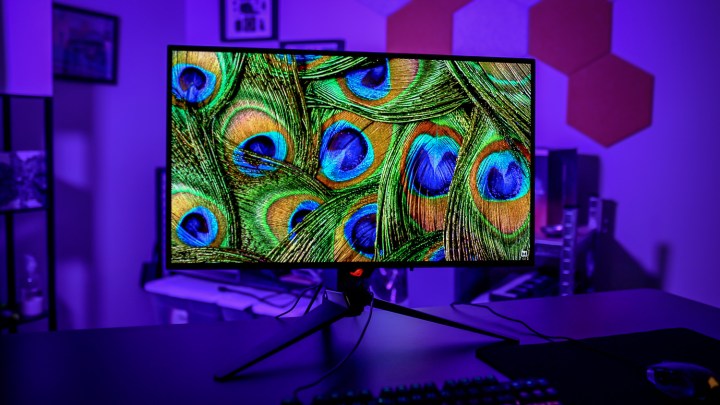
The Asus ROG Swift PG27AQDM wasn’t the first 16:9 OLED gaming monitor, but it’s still the best. Since the introduction of OLED gaming
There are a few of these displays making the rounds now, all using the same LG panel. We’re recommending the Asus because it’s by far the brightest we’ve tested. Brightness has always been an issue for OLED, but Asus gets around it with the PG27AQDM. And, of course, you’re still getting the perfect black levels and infinite contrast of OLED.
The largest innovation we saw this year in the world of
Editors' Recommendations
- As a lifelong PC gamer, these are the apps I couldn’t live without
- Intel’s new CPU feature boosted my performance by 26% — but it still needs work
- Don’t buy a cheap GPU in 2024
- Nvidia DLSS is amazing, but only if you use it the right way
- We finally know the price of Asus’ most powerful gaming NUC



